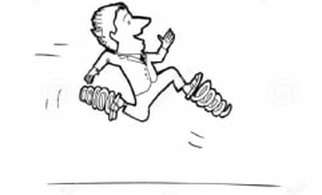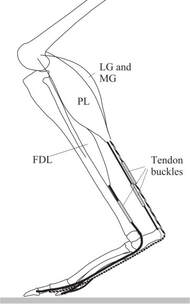|
Following on from the previous great work by Dominic Farris et al. we have a new article which gives us insights into the contribution of 2 of the largest intrinsic muscles of the foot, abductor hallucis and flexor digitorum brevis. Specifically, this research attempts to unravel how much of the foots function is passive and how much contributes by muscular function. When humans walk it is well known that a significant amount of the energy for forward motion occurs through the use of passive (built-in) springs of the body. Essentially these springs, such as the achilles tendon and plantar fascia, can “catch” some of the energy of the body landing down on the ground, “stretches” like a rubber band and then recoils to return a lot of the energy collected to rise the body back up again. The achilles tendon of course is one of the most significant human springs during walking and especially running and provides a sort of “free” energy to these motions rather than meaning all energy for walking comes only from the “push” of muscles. It is said that both Turkey’s and Kangaroos can reach a locomotion pace where the spring in their legs returns most of the energy for forward movement and therefore they can continue moving at this pace very efficiently with very little oxygen consumed relative to their mass. The kangaroo of course does this with enormously long feet with an enormously long achilles tendon to capture the bounce energy and return it. This new research conducted by Ryan Riddick shows that the foot plays an important role in accelerating and decelerating the body during powerful movements and can contribute up to 20% of the power from the lower limb. This new research specifically set out to establish how much the muscles of the foot contribute to lower limb power versus power that is simply contributed from the passive or non-muscular tissues such as the ligaments and fascia. When pushing off and up from the ground such as when climbing stairs, hills, or jumping, the foot muscles contribute about 10% of the total leg power, which doesn’t sound like a lot, but at least 90% of the foots contribution occurs through the muscles of the feet rather than the passive structures. In this study only the two muscles abductor hallucis and flexor digitorum brevis were monitored and it is of course likely that muscular input will amount to more than what has been estimated in this study. It can be assumed that as has been found in other research, without adequate foot strength and muscle function more load is placed on the passive structures of the foot, particularly the plantar fascia. When decelerating the body, the feet are even more important where they contribute about 20% of deceleration force with around 30% of this occurring from foot muscle activity and the rest from passive structures. This could be related to any sport where agility is important. In order to be agile we need to be able to rapidly prevent our continued movement in one direction and quickly transition from braking force into propulsive force. Therefore, we can assume that for a lot of sports like basketball, football, soccer, etc. which require rapid changes in direction that foot strength is going to play a role. It also tells us that when we are decelerating in sport we are likely placing a lot of stress on the passive structures of the foot which will be offloaded by the work of the muscular tissues. Riddick, Ryan, Dominic J. Farris, and Luke A. Kelly. "The foot is more than a spring: human foot muscles perform work to adapt to the energetic requirements of locomotion." Journal of the Royal Society Interface 16.150 (2019): 20180680.
0 Comments
Leave a Reply. |
AuthorMatt Dilnot is a Podiatrist working in the Eastern Suburbs of Melbourne, Victoria. Archives
May 2020
Categories |




 RSS Feed
RSS Feed